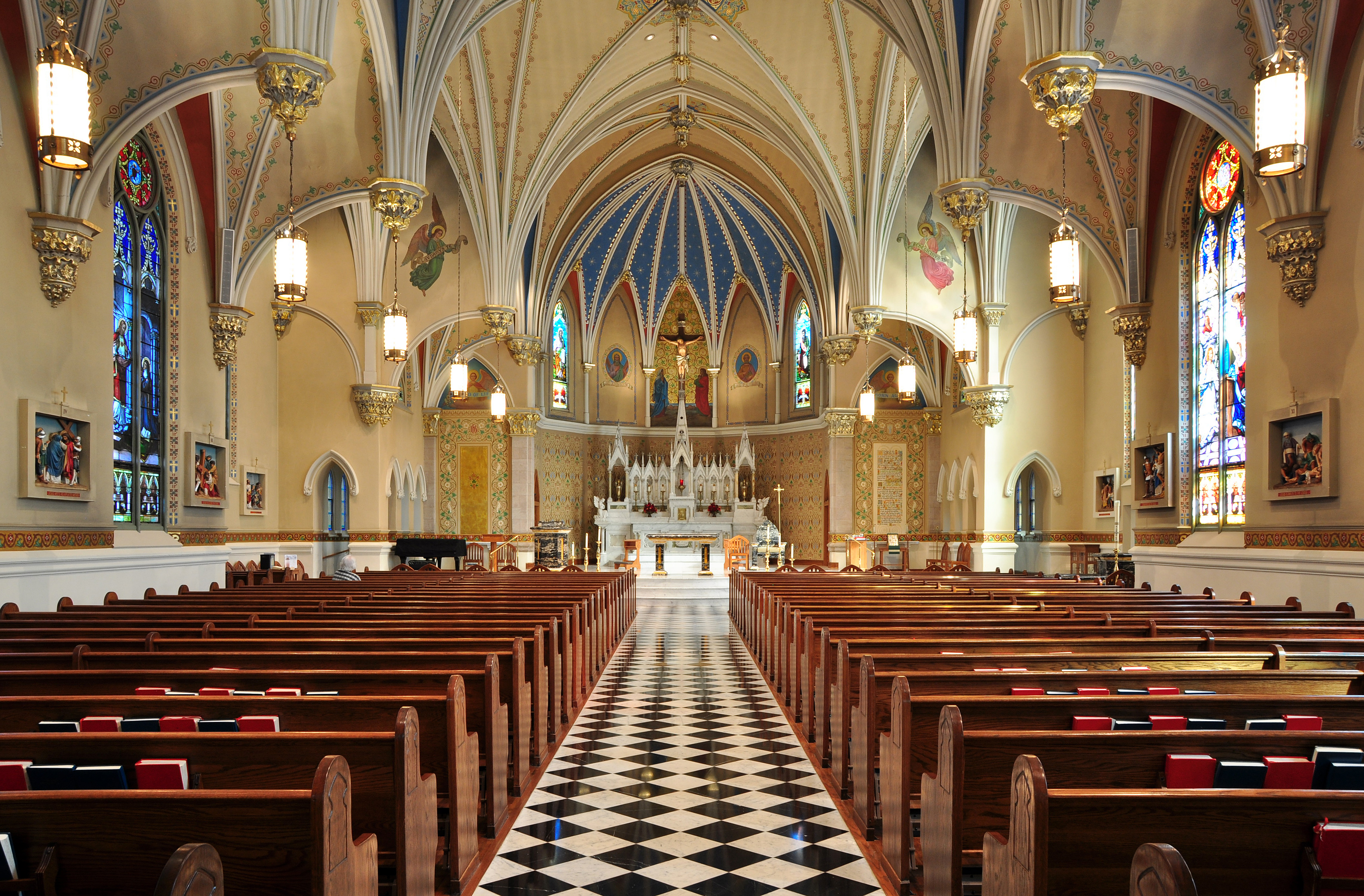
The architecture of a traditional Catholic Church serves as a visual hymn, harmonizing with the liturgy and facilitating the worship of God. Rooted in centuries of theological and liturgical traditions, the design of these sacred spaces reflects a deep understanding of the symbiotic relationship between the physical environment and the spiritual journey of the faithful. This essay explores the key elements of traditional Catholic church design, focusing on the significance of orientation, the placement of the altar, the congregation’s orientation, and the incorporation of sacred art and statues, drawing insights from the writings of Dom Denis Auguste Affre and the teachings of the Church Fathers.
Orientation and Altar Placement:
Central to the design of traditional Catholic churches is the intentional orientation towards the East, symbolizing the rising sun and the anticipation of the coming resurrection. This orientation is deeply rooted in the understanding that Christ, the Sun of Righteousness, will return from the East. Dom Denis Auguste Affre, a 19th-century Benedictine monk and liturgical scholar, emphasized in his work “Les Éléments d’archéologie chrétienne” the importance of aligning the church’s liturgical space with the cosmic order, creating a sacred axis that directs the faithful’s gaze toward the ultimate source of light – God.
The placement of the altar at the eastern end of the church is a pivotal element in this sacred choreography. Affre underscores the significance of the altar as the focal point of the liturgical action, representing the sacrificial nature of the Eucharist and serving as the meeting point between heaven and earth. This intentional arrangement encourages the congregation to join in the priestly action at the altar, fostering a sense of active participation in the divine mysteries especially during the the Tridentine Mass.
Congregational Orientation:
In traditional Catholic church design, the congregation is often positioned facing the East, aligning themselves with the priest at the altar. This arrangement, known as ad orientem (facing the East), symbolizes the Church’s pilgrimage towards the heavenly Jerusalem. The Church Fathers, including St. Augustine and St. John Chrysostom, emphasized the importance of this communal orientation, highlighting the unity of the faithful in their common journey towards God.
St. Augustine, in his “Confessions,” writes about the communal nature of worship, stating that “when we rise to pray, we turn East, where heaven begins. And we do this not because God is there, as if He had moved away from other parts of the world, but rather to help us remember to turn our mind towards a higher order, that is, to God.” This practice of facing East becomes a liturgical expression of the Church’s longing for the heavenly homeland.
Sacred Art and Statues:
Traditional Catholic churches are adorned with sacred art and statues, serving as visual aids to contemplation and devotion. Dom Denis Auguste Affre recognized the importance of these artistic elements in conveying the richness of the Christian faith. Statues of saints, images of the Virgin Mary, and representations of Christ contribute to the sensory experience of worship, engaging the faithful in a visual dialogue that deepens their connection to the divine.
The Church Fathers also affirmed the use of sacred art in worship. St. Basil the Great spoke of art as a means of instructing the illiterate in the faith, turning the walls of the church into a “book for the laity.” Sacred art, when incorporated into the architectural fabric of the church, serves as a tangible expression of the Church’s teachings, inspiring reverence and awe among the worshippers.
Conclusion:
The design of a traditional Catholic Church is a carefully orchestrated symphony, weaving together elements that elevate the liturgy and guide the faithful in their worship of God. The intentional orientation towards the East, the placement of the altar, the congregation’s communal facing, and the incorporation of sacred art and statues collectively create a sacred space that transcends the physical realm, inviting worshippers into a deeper encounter with the divine. Rooted in the wisdom of Church Fathers and enlightened by the writings of liturgical scholars like Dom Denis Auguste Affre, these architectural features continue to shape the spiritual journey of generations, providing a tangible expression of the Church’s enduring commitment to divine worship.
